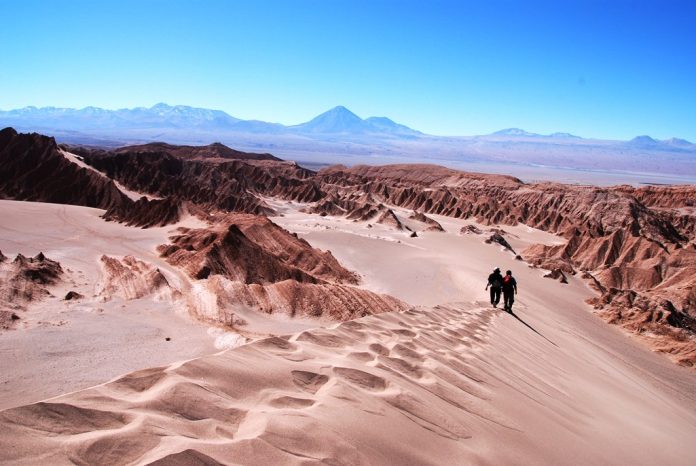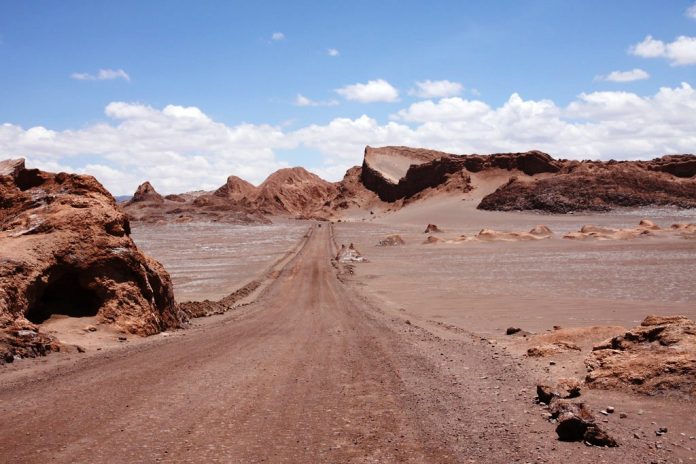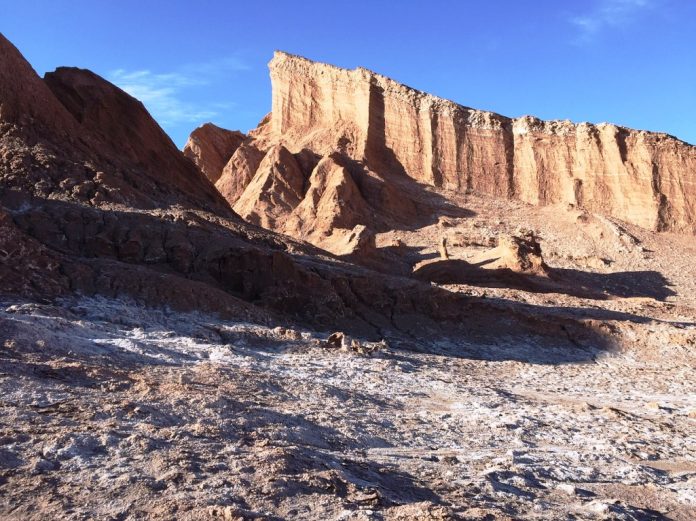Save for the wintry deserts at Earth’s poles; this stretch of northern Chile is the driest place on Earth. Hemmed between the magical snowcapped Andes and the Pacific Ocean, the Atacama has been formed by wind and burned in the sun for more than ten million years. The Atacama Desert is vast, stretching more than 40,000 square miles (103,600 km2), an expanse larger than the country of Greece.
In the heart of this arid landscape, you won’t find even a single blade of grass. In the centuries that humans have been measuring it, some parts have never even seen rain. The Atacama Desert is extremely unfriendly to life. Creatures that meander through and lose their way back to water are conserved for eons.
The lack of rain and cool temperatures (even in summer, it rarely tops 80°F (26.5°C)) have helped preserve ancient artifacts and even the remains of the pre-Columbian Chinchorro people, who eked out an existence in the desert’s margins. Therefore, the oldest mummies predate those in the Nile Valley by more than 2,000 years. But not everything in the Atacama is wretched and dead.
Birds have the advantage of being able to wing it to shelter, and species akin to coastal oystercatchers, Peruvian pelicans, terns, and gulls, as well as burrowing owls and turkey vultures, are every so often spotted in the skies. On the periphery of the desert, especially where Chile borders Bolivia, snowmelt from the Andes creates oases and feeds vast salt flats, and life flourishes.
In Los Flamencos National Reserve, a series of several flats not far from the town of San Pedro de Atacama, species such as the vicuña (an alpaca relative), rabbit-like viscacha, and Andean fox are common. Blue lagoons magnetize three diverse species of flamingos, creating an electric spectacle of pink and blue set against a dusty red backdrop.
In places, the landscape itself feels alive. In the foothills of the Andes, 50 miles north of San Pedro de Atacama, more than 90 geysers shoot jets of water as high as twenty feet into the crisp morning air. So, El Tatio is among the largest active geyser fields in the Southern Hemisphere. At night, hundreds of thousands of stars light up the skies over the Atacama Desert.
The air is extremely crisp, and evening clouds are virtually nonexistent. Some of the world’s most complicated telescopes train their lenses on the immense expanses of the night sky over the central Atacama. Though visitor access to the telescopes atop high hills is largely restricted, many treks to the Moon Valley or Death Valley, within view of the triangular Licancabur Volcano, offer amazing stargazing. In the Atacama Desert of Chile lies the astonishing monument “Mano del Desierto,” or the Hand of the Desert.
How to Stay: Many people make San Pedro de Atacama their base. The high-end hotel Awasi has daily access to personal desert guides, but cheaper options like Hotel Tulor are closer to the town’s church and central plaza. The National Geographic Unique Lodge of the World member Tierra Atacama Hotel & Spa is on the outskirts of San Pedro de Atacama.
HOW TO GET THERE: LATAM and Sky Airlines offer direct flights from Santiago to Calama, 90 minutes via shuttle bus or rental car to San Pedro de Atacama. National Geographic also offers trips to Chile.



















